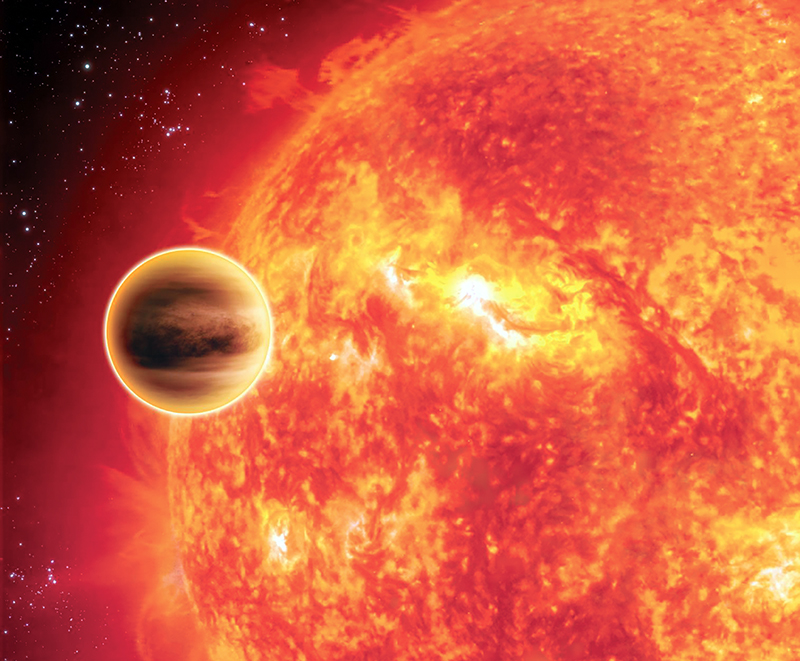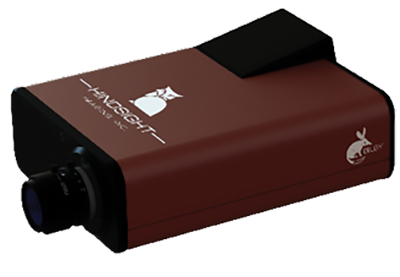
Compact Spectrometers Unveil Clues to Diagnose Cancer
NASA Technology
It may seem hard to remember now, with thousands of planets of various types and sizes discovered throughout the galaxy, but back in the 1990s, the field of detecting exoplanets was still in its infancy, and the tools used to look for them were too. Now, an instrument first imagined to look for distant worlds is helping uncover hidden details on this one—and it owes much of its development to NASA funding.
Arsen Hajian builds small but mighty spectrometers—he likes to say his company’s hyperspectral imagers pack the high resolution of machines nearly 30 times larger and as much as 10 times more expensive. He founded his latest company in 2015 but has been working on spectrometers for more than 20 years.
“Back when Arsen was first working on some of this stuff, exoplanets were really something of a new field,” recalls Goddard Space Flight Center astrophysicist Stephen Rinehart. “People were looking for them using radial spectroscopy”—a technique using measurements of a star’s wobble to infer the presence of a planet tugging back at its sun. Although spectroscopy had been around since the 1800s, the existing tools weren’t precise enough to get the results astronomers wanted. Hajian was one of the engineers working to make better ones.
Rinehart, who has been unofficially collaborating with Hajian off and on since the two went to graduate school together, works on instrumentation for NASA’s Observational Cosmology Lab. “I focus on what kind of mission or instrument we need for the next bit of science: how to design it, what does it need to do, and then work on building it,” he says.
That expertise has offered him the opportunity to work on a range of missions from the Hubble Space Telescope to, most recently, the Transiting Exoplanet Survey Satellite (TESS), and has brought him back to Hajian’s spectrometers as he considers the next big space telescope.
In recent years, astronomers have moved away from radial spectroscopy, instead favoring a technique using photometric transits—catching the faint dimming of a star that comes when a planet passes between it and the observer. But Rinehart thinks the next-generation telescopes may combine the two techniques into transit spectroscopy, which could help “astronomers get some clues to what the atmosphere of the exoplanet is like.”
If NASA decides to go that route, he says, “we will want to build the biggest telescope we can, using the smallest spectrometer we can, which is where Arsen’s tool comes in.”
Technology Transfer
Although Hajian’s company, Hindsight Imaging Inc., is young, the technology is based on a discovery the physicist made decades earlier at the U.S. Naval Observatory—with funding from NASA.
Many scientists get Government grants through the National Science Foundation, Hajian says, but as a Government employee, he was discouraged from applying for those. Instead, he turned to funding mechanisms available from NASA, including both the Advanced Technology Initiative (ATI) and ROSES, or Research Opportunities in Space and Earth Sciences.
“Basically, all of my funding during my 13 years at the Naval Observatory came either from the Navy, NASA, or corporations,” Hajian recalls. The grants funded his efforts to build better spectrometers for star cataloging and exoplanet detection, of interest to both the Navy and NASA.
But his big breakthrough came in large part because his training was in another field altogether, he says: “I’m a radio astronomer by training; nobody taught me optics.”
Most spectrometers are either small and low-resolution or very large but high-powered, following what Hajian calls “one of the basic rules of optics: a telephoto lens (typically long and bulky) magnifies the image, while a fisheye lens (typically much smaller) demagnifies.”
But since radio astronomy doesn’t require that tradeoff, Hajian was open to looking for a different approach. He found one, essentially adding two extra reflecting surfaces to the standard optical design to change the shape of the light as it enters from a round point to a long and skinny ellipse, without changing the focal ratio.
The result? “We got around that law. It allowed us to build spectrometers that are a bit more than three times smaller in all three directions than conventional instruments. It saves on volume by a factor of about 30.”
The breakthrough, which Hajian has patented, didn’t happen all at once, but the NASA-funded work he did at the Naval Observatory gave him an important foundation for the work that came later. “The whole point was learning how to build spectrometers and understanding the problems that needed to be solved,” Hajian says.
“A lot of times it felt like beating your head against the wall: what makes a spectrometer good or bad, and how is it connected to all of the other things that matter? That took me a long time to figure out. Then figuring out how to build it took me less time.”
Benefits
For now, Boston-based Hindsight mainly sells spectrometers as components to be integrated into larger instruments, and the company has quickly amassed “a wide variety of customers in multiple spectrometry markets,” Hajian says.
In the small but growing precision agriculture market, spectroscopy can be used to look for invasive species or for signs of plant disease, Hajian says, or to help farmers see precisely where they fertilized yesterday and where they didn’t.
Hindsight spectrometers are also integrated into devices that look for chemical explosives and monitor the content of medications. Both applications measure the spectrum of light absorbed, reflected, and emitted by a sample and compare it to the spectra of known substances, but they are packaged differently and use different software.
In mid-2017, the company also released its first two complete spectroscopy systems, one for detecting drugs and explosives at a short distance and another for detecting skin cancer. “The reason we have these two specific devices is because there is a lot of customer interest,” Hajian says. Hindsight already had orders for both, he added.
Down the road, he envisions game-changing medical advances from optical spectroscopy, including using spectrometers like his melanoma-detecting device to diagnose tumors underneath the skin, eliminating or reducing the need for biopsies.
He’s also working on devices that could replace traditional laboratory blood tests: “What we’re trying to do is deploy products where you look at a drop of blood or look at it through the skin, and right there you find out what is in your blood,” he explains.
The sky’s the limit, he says, for his devices. “In moderate volumes, our prices come down to affordable price points that are not possible with conventional technology. That opens up lots of opportunities, because if you can make it cheap and light and easy to use, it can fly off the shelves.”
And indeed, notes Rinehart, the sky’s no limit for applications at NASA. Beyond using the spectrometers on future space telescopes, another idea he is exploring is taking a small spectrometer, like what Hindsight is making, and putting it on a high-altitude balloon, to look for exoplanets and their atmospheric composition from near space.
That would put the instruments above 99 percent of the atmosphere, Rinehart says, which isn’t as good as 100 percent but would be a far less expensive way to “pick off the low-hanging fruit.”
And it wouldn’t be possible without a high-powered, very compact spectrometer. “This has always been the direction Hajian’s been going. He’s been working with the basic concepts for over 20 years now, coming up with better ways of doing things.”

Hindsight recently released one of its first complete spectroscopy systems, designed to detect melanoma in the skin without a biopsy.

Hindsight Imaging Inc.’s spectrometers are nearly 30 times smaller than conventional instruments with similarly high resolution.

Early on, NASA searched for alien worlds using spectrometers, which detect a star’s “wobble” to infer the presence of a planet tugging on it. Future efforts may use spectrometers in conjunction with a technique that detects a planet’s transits between its sun and the observer, which could help gather clues about the exoplanet’s atmosphere.













